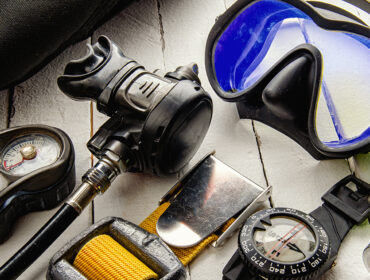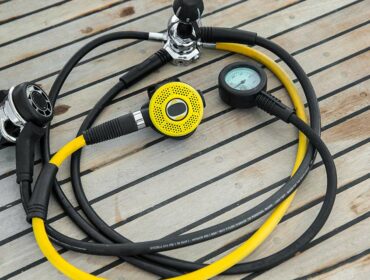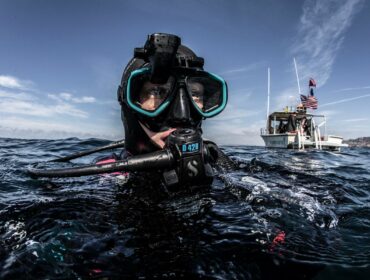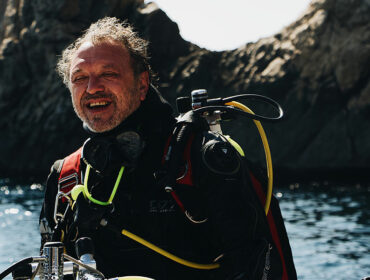For many divers, your regulator is one gear in your travel bag before a BCD or exposure protection, so buying the right one is critical. In this guide, we’ll cover the first and second stages and a very brief overview of gauge options. By the end of this guide, you will be able to buy the best regulator for your needs.
The First Stage
The first stage of a SCUBA regulator takes the high-pressure air from your tank and breaks it into intermediate pressure. The first stage is the part that attaches directly to your tank valve. In most cases, the first stage comes in a complete set with a second stage. Here are some features to consider:
- DIN or Yoke refers to how the first stage attaches to your tank. With a yoke first stage, the regulator slips over the top of the valve and is then held in place with a large bolt. With a DIN first stage, the regulator screws directly into the tank valve. Yoke first stages are the most common in recreational diving, while DIN is popular amongst technical divers. DIN allows for higher tank pressure, but only if the tank is compatible. Not every regulator is available with both options. DIN regulators can use a simple converter to switch to a yoke when DIN tanks are unavailable.
- Diaphragm or Piston refers to the technology that moves the high-pressure air into the intermediate-pressure hose. For most recreational divers, either will work fine. Piston regulators tend to perform slightly better at extreme depth, are more manageable and less expensive to maintain because they have fewer moving parts, but are more costly due to higher production costs. Diaphragm regulators work very well within recreational limits, may have more moving parts so that maintenance may be more involved and expensive, but manufacturing costs are lower. Diaphragm regulators are also less likely to freeze when diving in freezing water.
- Balanced or Unbalanced: This refers to how well the first stage performs at different depths and tank pressures. You are unlikely to find a diver who prefers an unbalanced first stage for anything other than price.
- Number of Ports: How many hoses do you plan on hooking up to your regulator? You’ll need at least one high-pressure port for your gauges/computer, one low-pressure port for your primary second stage, one low-pressure port for your alternate second stage (octopus), and one low-pressure port for your BCD. If you use a dry suit or have other needs, select a first stage with enough ports.
The Hose
Regulator hoses have been made of standard rubber for many years. In recent years, manufacturers have begun to produce braided hoses. Due to several recalls, mostly of high-pressure hoses (for gauges, not regulators), some divers are skeptical of these new braided hoses. However, they are significantly lighter and bendable than traditional rubber hoses. Theoretically, they are also more durable than their rubber counterparts, which is now debatable due to recent recalls. Regardless of the recalls, this is an option that most manufacturers are exploring and fine-tuning. This writer has been using the same braided hose for several hundred dives without issue.




